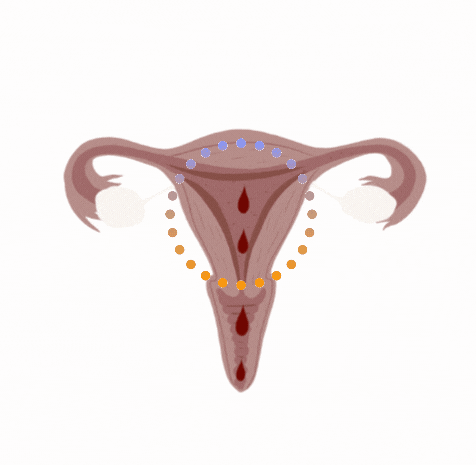The uterus
The uterus is the organ for pregnancy. It is a hollow muscle that receives the egg after fertilisation and where the pregnancy develops.
It also plays a vital role during childbirth, in particular through its contractions to expel the foetus and its appendages.
It is located above the vagina, into which it opens via the cervix.
It is supposed to be “leaning” forward: this is known as an anteverted uterus, but sometimes, before the 1st pregnancy, it can be “leaning” backwards. This is known as a retroverted uterus and is responsible for many painful menstruations.
During the gynaecological stage, the uterus measures an average of 6 cm, but it is very elastic and can grow to 33 or 44 cm during pregnancy (twins).
The uterus is made up of 3 parts (from outside to inside):
– the serosa: this is the membrane that surrounds it. It can be the origin of fibroids or myomas, which dent the uterus but do not usually affect its function.
– the muscularis: this is the muscle responsible for contractions during labour. It can also be the source of fibroids.
– the mucosa: this is the most important part of the uterus. It is the “lawn” where the egg is implanted after fertilisation. In the absence of pregnancy, this mucous membrane is periodically removed to produce menstruation. Myomas in contact with this mucosa can hinder or interrupt a pregnancy.
The uterus can also be divided into 3 parts from top to bottom:
– the body of the uterus: the thickest part,
– the isthmus: thinner
– the cervix, which opens into the vagina and can be the source of infections or benign or malignant tumours.
To the side and at the bottom of the uterus are the fallopian tubes, which carry sperm to the site of fertilisation, and the ovaries.
Source: Toubibadakar



